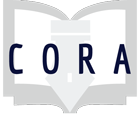Assignment
Bias in Your Search Results
A "jigsaw lite" activity to help students recognize that the information tools and systems they use in their everyday and academic lives are not neutral as existing power structures are reflected in the creation, organization, and access of information. Students work in small groups to read an assigned article about bias in a tool, source type, or system and answer questions to share with the larger class.
Students will be able to recognize that search tools and systems reflect power structures of race, gender, sexuality, class, etc.
Information Literacy concepts:
Individual or Group:
Ability Level:
This lesson and activity was designed for an upper-division Critical Race and Ethnic Studies (CRES) course, CRES 101 Race and the Media. While students didn’t need to include outside research for their media analysis assignment, due to the theme of the class, the graduate assistant and I felt that adding this layer of complexity would further contribute to students’ understanding of bias in knowledge creation, which is a unit covered in the course. After introducing the lesson using Polkinghorne's visualization and sharing the PBS NewsHour video, I divided students into six groups of five students. Each group read their assigned article, discussed and answered the discussion questions, and then reported what they learned to the class. While I link the articles on the online class guide, I also bring enough printed copies of the articles. For printing, I have found that it is easier to copy-paste the text of the articles into Microsoft Word / Google Docs. Although I included a handout with the discussion questions here in Project CORA, in class, I actually display the questions on the online class guide and have students write their answers on a large sticky note, which I provide, along with markers.
You may need to ask probing questions when students report their findings to the class. It can be helpful to remind students that not everyone has read the same article, so they need to provide enough information for classmates to understand the gist of the article. Though the general discussion questions allow for quick facilitation, which is helpful when swapping out articles for newer ones, you may want to develop more specific questions for each article. More targeted questions can help students focus on the most relevant parts of the reading. The articles will age quickly, so it's important to be on the lookout for short articles related to these issues. I have found that articles that fit on two pages in Microsoft Word / Google Docs work best for students to be able to read in class. True jigsaws can be challenging for a variety of instruction types, which is why I opted for in-person class reading in which students stayed in their groups and reported out their answers and thoughts to their classmates. This also helps combat anxiety students may feel about reading in a timed setting as they have others in their group who can help answer questions if they don't quite finish the article. There are many ways this lesson and activity can be adapted; it could work very well in a flipped setting, for example.

